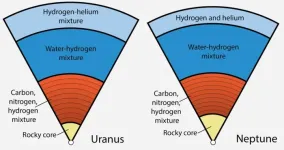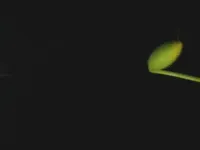(Press-News.org) A future treatment for Alzheimer disease may involve a nasal spray. Researchers at Università Cattolica and Fondazione Policlinico Universitario A. Gemelli IRCCS have discovered that by inhibiting the brain enzyme S-acyltransferase (zDHHC) through a nasal-spray drug, they can counteract the cognitive decline and brain damage typical of the disease. The study has been led by Professor Claudio Grassi, Director of the Neuroscience Department, and Professor Salvatore Fusco, with the collaboration of the University of Catania.
The researchers observed that the post-mortem brains of Alzheimer patients contained an excess of S-acyltransferase, which could be a promising therapeutic target of new drugs. They also found that higher concentrations of this enzyme were associated with worse cognitive performance. Thanks to a €890,000 grant from the Ministry of Health's 2023 PNRR call, new therapeutic approaches against this enzyme will be explored.
Background
The development of Alzheimer is driven by alterations in certain proteins, including beta-amyloid and tau, which aggregate and accumulate in the brain. These proteins’ functions are regulated by multiple signals and modifications, including the attachment of a fatty acid molecule in a biochemical reaction called "S-palmitoylation" , which is performed by S-acyltransferase enzymes (zDHHC).
“In previous studies, we demonstrated that altered S-palmitoylation of synaptic proteins plays a critical role in cognitive decline induced by metabolic diseases like type 2 diabetes (Spinelli et al., Nature Communications) and that brain insulin resistance may impact the amount of active zDHHC enzymes in the brain,” Prof. Fusco explains. The authors also note a well-established link between insulin resistance and neurodegenerative diseases, so much so that Alzheimer’s is often called type III diabetes.
“In this new study, we showed that in the early stages of Alzheimer, molecular changes resembling a scenario of brain insulin resistance cause an increase of zDHHC7 enzyme levels and alter the S-palmitoylation of key proteins involved in cognitive functions and beta-amyloid accumulation.”
Toward New Treatment Options
“Our findings show that in animal models of Alzheimer’s disease, both pharmacological and genetic inhibition of protein S-palmitoylation can counteract the accumulation of harmful proteins in neurons and delay the onset and progression of cognitive decline”, the lead author of the study Dr. Francesca Natale adds. Furthermore, in post-mortem brain samples from Alzheimer’s patients, there are elevated levels of zDHHC7 and S-palmitoylated proteins, with an inverse correlation between BACE1 S-palmitoylation levels and cognitive maintenance scores on the Mini Mental State Examination.
In experiments performed on genetically modified mice replicating Alzheimer’s disorder, researchers turned off zDHHC enzymes using an experimental nasal-spray drug called "2-bromopalmitate". This approach successfully stopped neurodegeneration, reduced symptoms, and even extended the animals’ lifespan.
“Currently, no drugs can selectively block zDHHC7, and 2-bromopalmitate is not sufficiently precise”, Prof. Grassi says. However, thanks to the PNRR 2023 funding, new approaches—potentially translatable to human therapies—will be tested, including “genetic patches” (small ‘oligonucleotides’ that bind to the zDHHC7 enzyme’s RNA and prevent its maturation) or engineered proteins that can interfere with zDHHC enzyme activity.”
END
Alzheimer's: A new strategy to prevent neurodegeneration
A study led by Università Cattolica at Rome and the Fondazione Policlinico Universitario Agostino Gemelli IRCCS in Rome, published in the prestigious journal PNAS, has revealed an important mechanism underlying Alzheimer and identified new therapeutic ta
2024-11-25
ELSE PRESS RELEASES FROM THIS DATE:
A clue to what lies beneath the bland surfaces of Uranus and Neptune
2024-11-25
Diamond rain? Super-ionic water?
These are just two proposals that planetary scientists have come up with for what lies beneath the thick, bluish, hydrogen-and-helium atmospheres of Uranus and Neptune, our solar system's unique, but superficially bland, ice giants.
A planetary scientist at the University of California, Berkeley, now proposes an alternative theory — that the interiors of both these planets are layered, and that the two layers, like oil and water, don't mix. That configuration neatly explains the planets' unusual magnetic fields and implies ...
Researchers uncover what makes large numbers of “squishy” grains start flowing
2024-11-25
Researchers Samuel Poincloux (currently at Aoyama Gakuin University) and Kazumasa A. Takeuchi of the University of Tokyo have clarified the conditions under which large numbers of “squishy” grains, which can change their shape in response to external forces, transition from acting like a solid to acting like a liquid. Similar transitions occur in many biological processes, including the development of an embryo: cells are “squishy” biological “grains” that form solid tissues and sometimes flow to form different organs. Thus, the experimental and theoretical framework elaborated here will help separate the ...
Scientists uncover new mechanism in bacterial DNA enzyme opening pathways for antibiotic development
2024-11-25
Researchers from Durham University, Jagiellonian University (Poland) and the John Innes Centre have achieved a breakthrough in understanding DNA gyrase, a vital bacterial enzyme and key antibiotic target.
This enzyme, present in bacteria but absent in humans, plays a crucial role in supercoiling DNA, a necessary process for bacterial survival.
Using high-resolution cryo-electron microscopy the researchers reveal unprecedented detail of gyrase’s action on DNA, potentially opening doors for new antibiotic therapies against resistant bacteria.
The research is published in Proceedings of the ...
New study reveals the explosive secret of the squirting cucumber
2024-11-25
UNDER EMBARGO UNTIL 20:00 GMT / 15:00 ET MONDAY 25 NOVEMBER 2024
New study reveals the explosive secret of the squirting cucumber
IMAGES AND VIDEO AVAILABLE – SEE NOTES SECTION BELOW
A team led by the University of Oxford has solved a mystery that has intrigued scientists for centuries: how does the squirting cucumber squirt? The findings, achieved through a combination of experiments, high-speed videography, image analysis, and advanced mathematical modelling, have been published today (25 November) in The Proceedings of the National Academy of Sciences (PNAS).
The squirting cucumber (Ecballium elaterium, from the Greek ‘ekballein,’ meaning to throw out) is named for ...
Vanderbilt authors find evidence that the hunger hormone leptin can direct neural development in a leptin receptor–independent manner
2024-11-25
Researchers from the Vanderbilt University School of Medicine Basic Sciences have uncovered the first example of activity-dependent development of hypothalamic neural circuitry. Although previous research has shown that the hormone leptin acts directly on hunger neurons through leptin receptors to promote the development of neural circuitry, results that will be published in PNAS on Nov. 25 indicate that certain neurons that do not express leptin receptors are nonetheless sensitive to its activity.
The research, led by the lab of Richard Simerly, Louise B. McGavock Professor and professor of molecular physiology ...
To design better water filters, MIT engineers look to manta rays
2024-11-25
Filter feeders are everywhere in the animal world, from tiny crustaceans and certain types of coral and krill, to various molluscs, barnacles, and even massive basking sharks and baleen whales. Now, MIT engineers have found that one filter feeder has evolved to sift food in ways that could improve the design of industrial water filters.
In a paper appearing this week in the Proceedings of the National Academy of Sciences, the team characterizes the filter-feeding mechanism of the mobula ray — a family of ...
Self-assembling proteins can be used for higher performance, more sustainable skincare products
2024-11-25
If you have a meticulous skincare routine, you know that personal skincare products (PSCPs) are a big business. The PSCP industry will reach $74.12 billion USD by 2027, with an annual growth rate of 8.64%. With such competition, companies are always looking to engineer themselves an edge, producing products that perform better without the downsides of current offerings.
In a new study published in ACS Applied Polymer Materials from the lab of Professor of Chemical and Biomolecular Engineering Jin Kim Montclare, researchers have created a novel protein-based gel as a potential ingredient in sustainable and high-performance PSCPs. This protein-based ...
Cannabis, maybe, for attention problems
2024-11-25
Cannabis — whether marijuana itself or various products containing cannabinoids and/or THC, the main psychoactive compound in weed – have been touted as panaceas for everything from anxiety and sleep problems to epilepsy and cancer pain.
Nursing researcher Jennie Ryan, PhD, at Thomas Jefferson University, studies the effects of cannabis on symptoms of attention deficit hyperactivity disorder (ADHD). Current medical guidelines for ADHD include medications such as Adderall and cognitive behavioral therapy. ...
Building a better path to recovery for OUD
2024-11-25
A new study led by Thomas Jefferson University researchers highlights critical healthcare gaps that hinder long-term recovery for people living with opioid use disorders (OUD) in Philadelphia.
The researchers conducted 13 focus groups with 70 participants accessing various types of OUD treatment. Participants reported several challenges, such as lengthy and restrictive assessment processes, inadequate operating hours and lack of sufficient withdrawal management. Participants also reported broader socio-economic needs, such as housing and income support, as barriers to their recovery.
Meghan Reed, PhD, MPH, senior ...
How climate change threatens this iconic Florida bird
2024-11-25
ITHACA, N.Y. – Because of warmer winters, Florida scrub-jays are now nesting one week earlier than they did in 1981. But these early birds are not always getting the worm.
A new analysis of data from a long-term study, published in Ornithological Advances, finds that warmer winters driven by climate change reduced the number of offspring raised annually by the federally threatened Florida scrub-jay by 25% since 1981.
Warmer temperatures, the scientists hypothesize, make jay nests susceptible to predation by snakes for a longer period of the Florida ...
LAST 30 PRESS RELEASES:
Interaction of climate change and human activity and its impact on plant diversity in Qinghai-Tibet plateau
From addressing uncertainty to national strategy: an interpretation of Professor Lim Siong Guan’s views
Clinical trials on AI language model use in digestive healthcare
Scientists improve robotic visual–inertial trajectory localization accuracy using cross-modal interaction and selection techniques
Correlation between cancer cachexia and immune-related adverse events in HCC
Human adipose tissue: a new source for functional organoids
Metro lines double as freight highways during off-peak hours, Beijing study shows
Biomedical functions and applications of nanomaterials in tumor diagnosis and treatment: perspectives from ophthalmic oncology
3D imaging unveils how passivation improves perovskite solar cell performance
Enriching framework Al sites in 8-membered rings of Cu-SSZ-39 zeolite to enhance low-temperature ammonia selective catalytic reduction performance
AI-powered RNA drug development: a new frontier in therapeutics
Decoupling the HOR enhancement on PtRu: Dynamically matching interfacial water to reaction coordinates
Sulfur isn’t poisonous when it synergistically acts with phosphine in olefins hydroformylation
URI researchers uncover molecular mechanisms behind speciation in corals
Chitin based carbon aerogel offers a cleaner way to store thermal energy
Tracing hidden sources of nitrate pollution in rapidly changing rural urban landscapes
Viruses on plastic pollution may quietly accelerate the spread of antibiotic resistance
Three UH Rainbow Babies & Children’s faculty elected to prestigious American Pediatric Society
Tunnel resilience models unveiled to aid post-earthquake recovery
Satellite communication systems: the future of 5G/6G connectivity
Space computing power networks: a new frontier for satellite technologies
Experiments advance potential of protein that makes hydrogen sulfide as a therapeutic target for Alzheimer’s disease
Examining private equity’s role in fertility care
Current Molecular Pharmacology achieves a landmark: real-time CiteScore advances to 7.2
Skeletal muscle epigenetic clocks developed using postmortem tissue from an Asian population
Estimating unemployment rates with social media data
Climate policies can backfire by eroding “green” values, study finds
Too much screen time too soon? A*STAR study links infant screen exposure to brain changes and teen anxiety
Global psychiatry mourns Professor Dan Stein, visionary who transformed mental health science across Africa and beyond
KIST develops eco-friendly palladium recovery technology to safeguard resource security
[Press-News.org] Alzheimer's: A new strategy to prevent neurodegenerationA study led by Università Cattolica at Rome and the Fondazione Policlinico Universitario Agostino Gemelli IRCCS in Rome, published in the prestigious journal PNAS, has revealed an important mechanism underlying Alzheimer and identified new therapeutic ta




